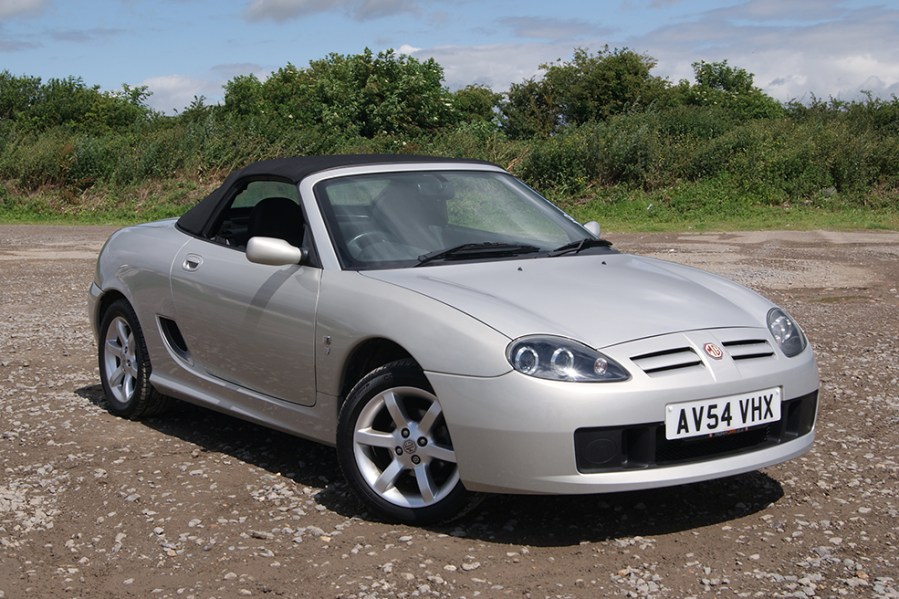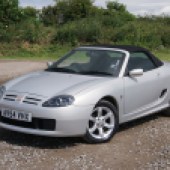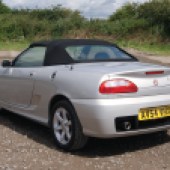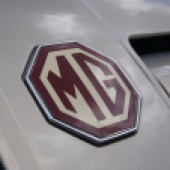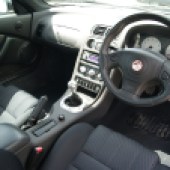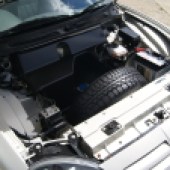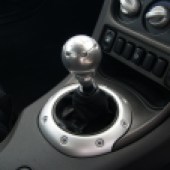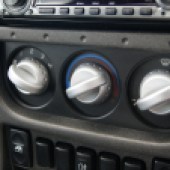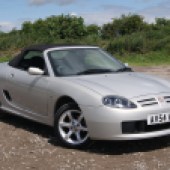The MG TF was one of MG Rover’s swansong models, and probably one of its best. Here’s how to buy this modern classic take on the British sports car
Sponsored editorial in association with Lancaster Insurance
Introduced in 2002, the MG TF was essentially a light update of the earlier MGF, but history has given it greater significance as the last MG sports car for years until the Cyberster broke cover last year. The MGF itself had been created on a tight budget, making extensive use of parts from the Rover group – including Metro subframes. These dictated the use of Hydragas suspension, which provided a supple and entertaining ride but was costly and not particularly sporting. Once Metro production ended, the price of the limited number of Hydragas units MG Rover required became prohibitively high, prompting the decision to develop a steel-sprung replacement. This car would become the TF.
Sharper styling, more power and firmer suspension gave the TF a noticeably more sporting character than its predecessor, and it proved a sales success. Some critics, however, remarked that it looked rather too similar to the MGF. Today, that similarity is an advantage, as it improves the availability of interchangeable parts for those keen to keep their TFs on the road.
The line-up was straightforward: the entry-level TF115 with a 1.6-litre K-series producing 116bhp, plus two 1.8-litre options. These were the TF135 and the TF160 VVC, developing 135 and 157bhp respectively. An unusual variant was the TF Stepspeed, powered by a 120bhp Rover 75-spec 1.8 paired with a CVT gearbox. Rare from the outset and now rarer still, poor upkeep has made them less reliable and less sought-after than manual cars – though that does mean bargains can sometimes be found.
Just prior to the factory’s closure in 2005, the TF underwent a substantial update, gaining retuned suspension, fresh trim and a glass rear window for the hood. These later cars are desirable, representing both the peak of the British-built TF and the closing chapter of MG Rover, which shut its doors in April 2005.
The TF returned in 2008 under the stewardship of Nanjing Automotive, who restarted production to what was largely the 2005 specification. Minor tweaks distinguished these Chinese-era cars – most obviously a revised grille and updated instruments – and as the first ‘new’ MGs in Britain, they now command strong prices among collectors. Production ended again in 2011.
In total, 39,249 TFs were built in the UK, along with 500 LE500s, 50 85th Anniversary editions and a handful of TF135s during the brief revival at Longbridge. While the Chinese-built cars carry a premium, it is still possible to pick up a usable TF for under £1000, with excellent British-built examples available for around £2500. At those prices, it is hard to resist – making the TF one of Britain’s most appealing and affordable mid-engined modern classics.
MG TF values
Project-grade MG TFs can still be found for a few hundred pounds, though they usually require extensive work. Usable examples with an MOT are readily available from around £1000, offering cheap entry into mid-engined sports car ownership. Cherished British-built cars with history and tidy bodywork generally command £2500-£5000, while genuinely mint, low-mileage TF160s or late 2005 revisions can fetch £6000 or more. The Chinese-era TFs, produced from 2008 to 2011, are rarer and carry a collector’s premium, with values typically starting around £7000.
Insurance Costs
2003 MG TF 1.6, £2500 value.
Example quote: £161.50 or £179.50 with Agreed Value.Quotation supplied by Lancaster Insurance. Tel: 01480 400761
Quote based on a 45-year-old marketing manager, access to another car, no claims or convictions, club member, 3000 miles per year, no modifications, living in SP2 0HL. Disclaimer: Subject to underwriting criteria. An additional charge may be payable. Authorised and regulated by the Financial Conduct Authority.
Bodywork
The side air intakes, wheel arches and front wings are all prone to stone chip damage, which in time can encourage corrosion. While the TF is generally a rust-resistant classic, these particular spots must not be overlooked. It’s also advisable to get underneath and inspect the front and rear subframes – their origins lie in the venerable Metro, and they have a tendency to hold water, which can lead to structural rust you really don’t want to contend with. Pay special attention to the engine carrier in the rear frame and the strengthening box sections at the front, as these are especially at risk. If there are problems here, it’s best to walk away.
Leaks are another known weakness. Examine the seals around the door mirrors – if one has failed, the entire door seal will need replacing, which will set you back around £200, assuming you can find any in stock at specialists. This is often the culprit behind damp footwells, though on early cars the heater cold-air intake box can also allow water into the passenger side. A redesigned intake introduced in 2003 largely solved the issue, but remember some later-registered cars may have spent time unsold, and still be fitted with the earlier setup.

Engine and transmission
All MG TFs were fitted with variants of the Rover K-series engine family – later Chinese-built TFs gained an updated version known as the N-series, but as it’s a derivative of the K, the same considerations still apply.
It’s something of a cliché, but head gasket issues are not uncommon on these units, so look out for mayonnaise-like residue under the oil filler cap and signs of contamination in the coolant. With the radiator mounted remotely, there are plenty of potential leak points, so confirm the coolant level is correct. Dishonest sellers may top it up before a viewing, but the less attentive won’t bother – either way, avoid any car that shows a seriously low level.
The engine itself was cleverly designed, with dowels aligning the major components. However, if the car has overheated, the plastic dowels (a cost-cutting measure) may have softened, leading to head shuffle. If you’re considering a project car that runs poorly after a head gasket replacement, this can’t be ruled out – so have it inspected.
Properly maintained, the K-series is generally dependable – a lively, characterful engine that suits the TF well. Don’t let this reputation alone put you off owning such a rewarding car.
The PG1 gearbox fitted to these cars traces its roots back to the Austin Montego, with development input from Honda. It went on to feature in almost everything Rover produced apart from the Mini (unless someone knows otherwise!) and is reliable in service, provided the power output remains standard. Those with tuned engines may prefer to source a strengthened PG1 from a Rover 620ti or 820 Vitesse.
It’s also worth noting the Stepspeed models. Using the wrong lubricant can cause problems, so always check the paperwork for gearbox servicing. Ordinary CVT fluids are unsuitable, but the correct oil is still available from XPart. In the worst case, the R50 MINI employed a near-identical ZF CVT, and its fluid is compatible with the MG unit.
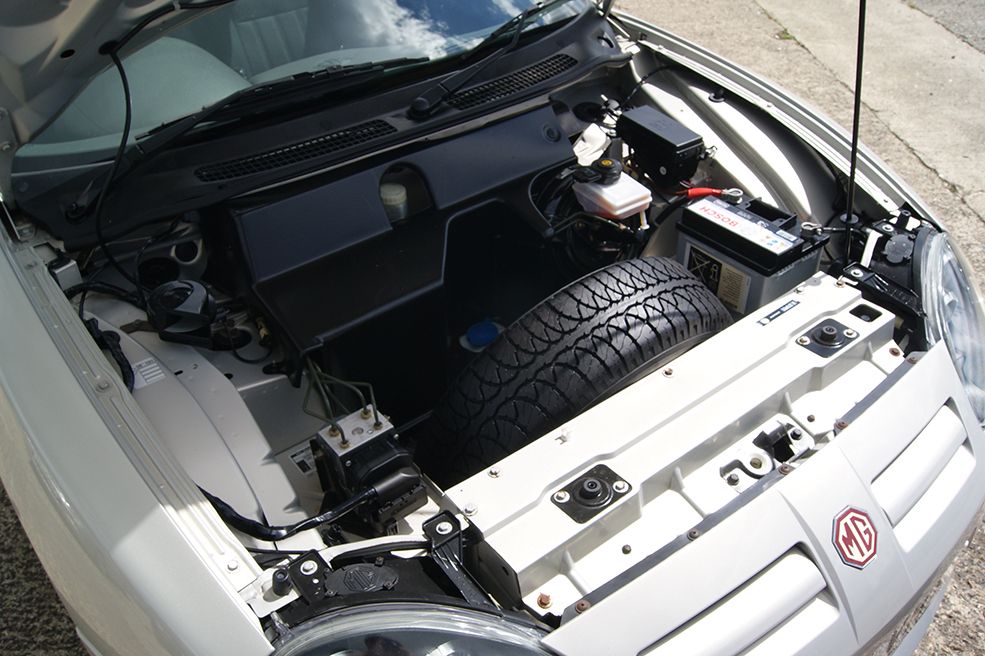
Suspension, steering and brakes
If you step into a 2002-2005 TF and find the ride almost uncomfortably firm, that’s entirely normal. For the final 2005 models, suspension settings were revised to something more compliant, and the later Chinese-built cars carried these changes forward. The original, stiffer setup was then offered as the “Sportspack 1” option.
Earlier cars can be improved with a Bilstein comfort kit supplied by former MG engineers at Vehicle Handling Solutions. Alternatively, later suspension components can be retrofitted to an earlier car.
All TFs featured power steering as standard – an EPAS system first designed for the MGF. It’s generally reliable, though many owners remove the relay to achieve a heavier steering feel. If the car you try doesn’t feel quite right, it’s worth checking whether the relay is still present and functioning.
Every TF came with disc brakes, though while standard cars had 240mm fronts, the quicker 160 gained larger 304mm discs. The 160 also swapped the usual sliding calipers for distinctive red four-pots. You may come across this upgrade fitted to lower-spec cars, though it’s rarely needed. ABS was standard on the 160 and the Stepspeed from launch, and became optional on other models until 2004. A new pair of front discs should cost you around £75, with quality pads at roughly half that.
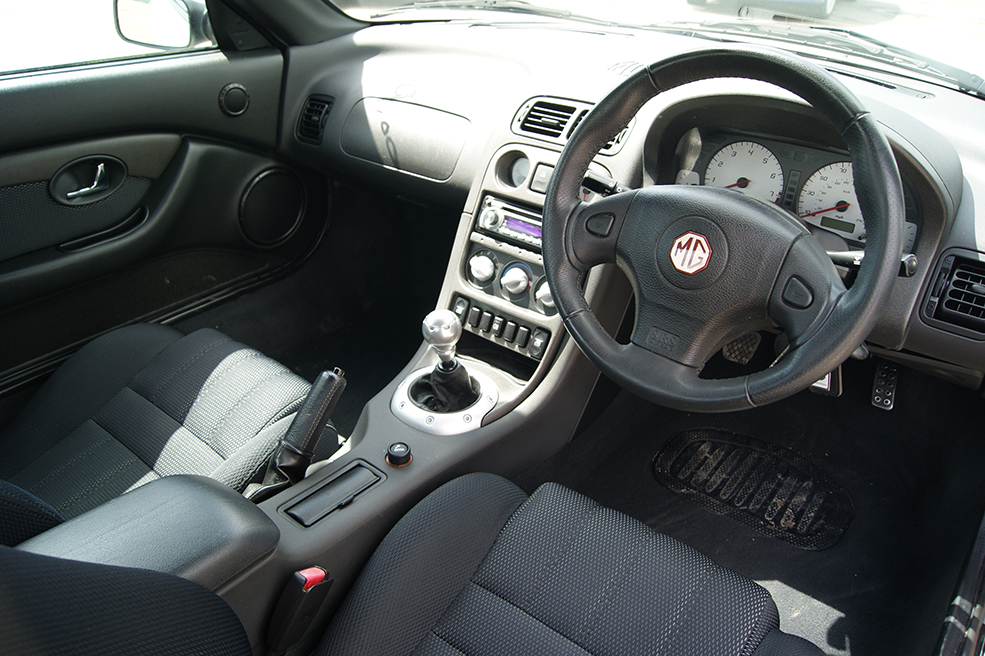
Interior, trim and electrics
Interiors were offered in either cloth or leather – leather is generally simpler to replace or have retrimmed by a capable upholsterer, whereas cloth tends to stay cooler in summer, warmer in winter, and is reasonably durable. Trim inlays varied, with aluminium and walnut being the most common, though some cars even featured a carbon-effect finish. These pieces are straightforward to obtain, so condition or originality shouldn’t be a major concern.
Many switches and fittings were shared across the wider MG Rover range, including the 25, 45 and 800 models – while the steering wheel was closely related to that used in the 1990s Mini.
The condition of the hood deserves close inspection. Black was most common, though blue, green, cream and red were also offered. Most cars had plastic rear windows, though later examples featured glass. On plastic-equipped cars, look for brittleness, cloudiness or splits – replacement windows can cost as much as £400 including fitting. Also inspect for rubbing damage, and never force the hood down if the elastic prevents it lowering, as this will bend the frame.
All mounting points for a hard top are present – if one is fitted, make sure the heated rear window switch and relay are included. Hard tops aren’t specific to a single model, and a second-hand TF roof should fit without issue.

MG TF: our verdict
The MG TF makes a strong case as an alternative to the Mazda MX-5, not just because it carries one of the most respected badges in the business, but also because the range is broad enough to suit almost anyone.
For those on a budget, the standard 1.8-litre models are the best buys. In truth, they’re no more costly to run than the 1.6, more common, and easier to source parts for. The VVC-equipped cars are great fun and represent genuine performance bargains. We would steer clear of the Stepspeed solely because many have been poorly maintained – buy carefully and ideally with a full service history.
The Chinese-built cars have a certain appeal – being newer with distinctive styling – but generally the British models are better put together. That said, the Chinese cars are far from undesirable; they mark the very last MG sports cars and can often command a premium for that reason alone.
MG TF timeline
2002
TF name reintroduced as MGF update – uses same platform but with updated styling and coil springs replacing Hydragas.
2004
MG TF 135 launched with 135bhp 1.8-litre engine, improved suspension and interior refinements.
2005
MG TF 160 (160hp) with variable valve control (VVC) launched.
2006
Various limited editions, such as the LE500, released with unique colours and trims.
2008
Following MG Rover’s collapse, Nanjing Automobile (later SAIC) briefly continue producing revised TF in China. Styling and engine gently updated, with comparable quality.

